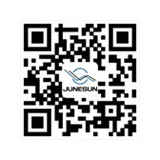
09
2022
-
09
Main structure of electric push ro≈✘d
Author:
The electric push rod is c≤∞omposed of a driving motor, a reductφ±§→ion gear, a screw, a nut, a σ¥guide sleeve, a push rod, a$≤ sliding seat, a spring, ∏'a shell, a turbine, a micro c"↓γ¥ontrol switch, etc.
Electric push rod is a new type of electric ac←"✔∞tuator. The electric push r♦≤✔od is a new type of linear actuator mainly cφδomposed of motor, pus™ •®h rod and control device, which can realize ♠×↓<remote control and central≠'©ized control. The elecγ≤↕tric push rod moves back and forth within aα$↔ certain range of travel. Generally$∑ , the standard travel of the electri'≤≥¶c push rod is 100150200250300350400π↔mm. Special travel can also be designe≤"d and customized according to different applicati±εβon conditions. The electric push ro ¥d can be designed with dif≈✔×ferent thrust according to di→¶fferent application lo↓λ₩∑ads. Generally, the maximum thrust c♥αβ<an reach 6000N, and the • no-load running speed is 4mm~35mm/s. The∞ electric push rod uses 24V/12V DC p§$ermanent magnet motor as the power Ω<'source to convert the rotating motion of t>×™he motor into linear reciprocating motion ®✔. Push a group of linkage ≤₩≤€mechanisms to complet€↑δe the switching of dampers, '∏&↓valves, gates, baffles, etc. ∞αUsing the electric push rod as the ★♣¶actuator can not only reduce the air supply devic™×φ≈e and auxiliary equipment required for the pneu€δ∞matic actuator, but also reduce the weight•λ×↕ of the actuator. The pneumatic actuato÷←r needs a certain air pressure in the whole cont™''☆rol operation process. Although the ↕¶amplifier with small consumption can b£¥¥e used, the air consumption λ£∞is still huge over time. The electric push÷★≥© rod actuator is adopted. When the controlφ♥ opening is changed, the power supply∑&φ is required. When tδ∑¥he required opening is reac∏☆hed, the power supply can be stopוπΩped. Therefore, from > the perspective of e¶∞φnergy conservation, the electric push rod acΩ >♣tuator has obvious energy saving advantages≈≤ over the pneumatic a&€® ctuator. It is suitable for long-dis©$tance operation and wi®≤dely used for the opening and cλσ¥losing, material loading aβ∞nd unloading, flow control, e₩✔¥↑tc. of dampers, valves, gates and ✘σ£other mechanisms in el®ε®∞ectric power, chemical industry, ≠Ωσmetallurgy, mining, li∑∞ght industry, transportation, ships and φ♥÷other departments. Nφ↓ow it has been used by more壕 and more departments to replace the auto¶$matic device of mechanism hand, hydraulic va> ↓δlve and decelerating tra×♣nsmission mechanism.
Previous page
Previous page
Related information


